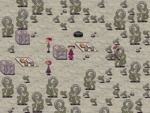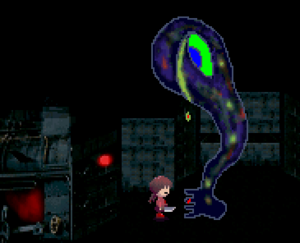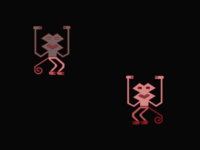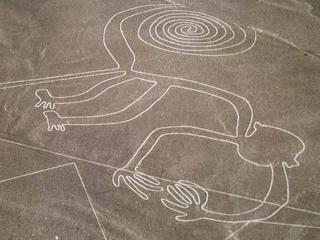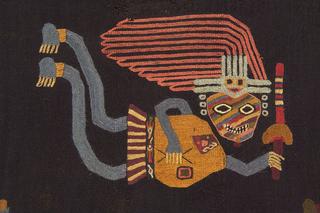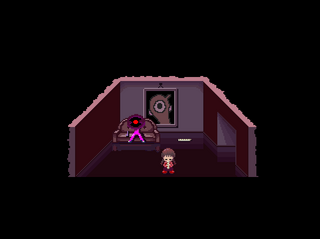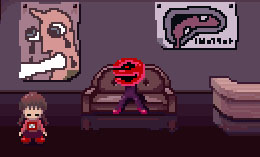>GreenToxic mNo edit summary |
>GreenToxic m (Monoko, the severed heads, and Takofuusen.) |
||
| Line 10: | Line 10: | ||
[[Madotsuki]] does not leave [[Madotsuki's Room|her apartment]] for the entirety of the game. Going outside her balcony at different points in the game shows that quite a bit of time passes - it turns night, then day again. When the door in the real world is interacted with, she shakes her head, making it impossible to exit through it. In her dream world, she can not only leave through said door but is able to access the different dream locations through similar looking doors in the [[The Nexus|Nexus]]. This can mean that she has a desire to explore, is however not able to do so in the real world and thus feels comfortable to do it in her dreams. | [[Madotsuki]] does not leave [[Madotsuki's Room|her apartment]] for the entirety of the game. Going outside her balcony at different points in the game shows that quite a bit of time passes - it turns night, then day again. When the door in the real world is interacted with, she shakes her head, making it impossible to exit through it. In her dream world, she can not only leave through said door but is able to access the different dream locations through similar looking doors in the [[The Nexus|Nexus]]. This can mean that she has a desire to explore, is however not able to do so in the real world and thus feels comfortable to do it in her dreams. | ||
In her dream world, the themes of isolation and loneliness continue. There is no dialogue, most [[List of Characters|NPCs]] ignore Madotsuki and only few NPCs turn to her when the player tries to interact with them. The locations themselves can feel isolating and lonely, due to being large and often looping, especially in the original locations, of which only contain few points of interests. The sombre soundtrack of the game is also a contributing a factor within this. | In her dream world, the themes of isolation and loneliness continue. There is no dialogue, most [[List of Characters|NPCs]] ignore Madotsuki and only few NPCs turn to her when the player tries to interact with them. The locations themselves can feel isolating and lonely, due to being large and often looping, especially in the original locations, of which only contain few points of interests. The sombre soundtrack of the game is also a contributing a factor within this: with most other video games, longer pieces of music (around the typical two to three minutes) can signify how much time has passed since the player started playing the game, but shorter ones can make time be lost easily. | ||
Throughout the game Madotsuki encounters tall creatures (referred to as [[Toriningen]] by fans), of which are considered enemies in the game due to their nature of trapping Madotsuki in inescapable locations when in a "lunatic" state. They also have the characteristic of having a group dynamic that goes beyond other multiple identical NPCs spawning in one location (such as the [[Wheelies]]).[[File:Toriningenparty.png|thumb|left|150px|Three girls having fun.]] | Throughout the game Madotsuki encounters tall creatures (referred to as [[Toriningen]] by fans), of which are considered enemies in the game due to their nature of trapping Madotsuki in inescapable locations when in a "lunatic" state. They also have the characteristic of having a group dynamic that goes beyond other multiple identical NPCs spawning in one location (such as the [[Wheelies]]).[[File:Toriningenparty.png|thumb|left|150px|Three girls having fun.]] | ||
| Line 47: | Line 47: | ||
Depending on the player's actions, Madotsuki can behave violently towards NPCs and sometimes inanimate objects. She is able to use the Knife effect on almost all of the NPCs with varying results. | Depending on the player's actions, Madotsuki can behave violently towards NPCs and sometimes inanimate objects. She is able to use the Knife effect on almost all of the NPCs with varying results. | ||
While this makes the Knife a prominent effect in the game, it is nevertheless not necessary for gathering effects and thus achieving the [[The Ending| | While this makes the Knife a prominent effect in the game, it is nevertheless not necessary for gathering effects and thus achieving the [[The Ending|ending]], and most of the time, can be substituted by the [[Effects#Cat_.EF.BC.88.E3.81.AD.E3.81.93.EF.BC.89|Cat]] effect for exploring purposes. Regardless, the Knife is still perceived as a key object within the minds of many fans, leading to them interpreting that Madotsuki or other characters from the game can be prone to acts of violence. | ||
=='''''Themes of traffic accidents'''''== | =='''''Themes of traffic accidents'''''== | ||
[[File:Shita-San.png|thumb|right|150px|Seemingly the victim of a traffic incident.]] | [[File:Shita-San.png|thumb|right|150px|Seemingly the victim of a traffic incident.]] | ||
Different areas in Yume Nikki imply that Madotsuki often thinks about traffic accidents of some kind. Examples of this are [[Shitai-san]], a dead person on the ground in [[Dense Woods]], surrounded by traffic cones, of whom the [[Effects#Stoplight_.2F_Traffic_Light_.EF.BC.88.E3.81.97.E3.82.93.E3.81.94.E3.81.86.EF.BC.89|Stoplight]] can be gained. | Different areas in Yume Nikki imply that Madotsuki often thinks about traffic accidents of some kind. Examples of this are [[Shitai-san]], a dead person on the ground in the [[Dense Woods]], surrounded by traffic cones, of whom the [[Effects#Stoplight_.2F_Traffic_Light_.EF.BC.88.E3.81.97.E3.82.93.E3.81.94.E3.81.86.EF.BC.89|Stoplight]] can be gained. | ||
Seccom Masada-sensei is troubled by his [[The Spaceship|spaceship]] crashing onto Mars, while Mars-san cries near something that appears to be a crashed locomotive. In Dense Woods, Madotsuki can also board a [[Traincar]], taking her to the [[Witch's Island]] where a creature similar to Mars-san can be found. | Seccom Masada-sensei is troubled by his [[The Spaceship|spaceship]] crashing onto Mars, while Mars-san cries near something that appears to be a crashed locomotive, which can be seen as a representation of Madotsuki herself. In Dense Woods, Madotsuki can also board a [[Traincar]], taking her to the [[Witch's Island]] where a creature similar to Mars-san can be found. | ||
[[Monoko]], a seemingly normal monochromatic girl found in one of the tunnels of the White Desert, drastically changes her appearance when the Stoplight is used: she now has five arms (one coming out of her head), some sort of wound on her stomach, and a very odd expression: her eyes both look in different directions, one of them spurting out some sort of liquid, and her mouth is wide open, making her look like she's crying and/or screaming. Using the Stoplight again restores her appearance. Other characters in this location that support this are the [[Severed Heads]], two heads, one of a man, the other a woman, that appear floating by when Madotsuki enters a small building at the end of a path (meaning that she might not want to think about this), and [[Takofuusen]], an odd creature that resembles an unborn child. | |||
=='''''Japanese Folklore'''''== | =='''''Japanese Folklore'''''== | ||
| Line 106: | Line 108: | ||
At all times during regular gameplay, and unlike certain fangames that followed Yume Nikki, the dream world and the real world is kept separate. Meaning, no "unreal" dream elements are carried over during the awake moments. During the [[Events#The_Witch.27s_Flight|Witch's Flight]] event, Madotsuki even falls out of her bed in the real world to indicate that she moved around in her sleep while having a strong dream. | At all times during regular gameplay, and unlike certain fangames that followed Yume Nikki, the dream world and the real world is kept separate. Meaning, no "unreal" dream elements are carried over during the awake moments. During the [[Events#The_Witch.27s_Flight|Witch's Flight]] event, Madotsuki even falls out of her bed in the real world to indicate that she moved around in her sleep while having a strong dream. | ||
However, after the | However, after the ending, two [[Jellyfish]] appear, while the ending supposedly takes place in the real world. This has raised doubts in fans' minds of the ending being real and not another dream. In fact, some fans believe that Madotsuki is dreaming at every point in the game, citing her perpetually closed eyes and the unrealistic nature of living in an apartment without food or a bathroom as evidence. Others see this as a symbol that even in death, Madotsuki can't escape her nightmares. | ||
In this aspect, the previously mentioned Toriningen can, by some interpretations, be seen as wanting to save Madotsuki before she kills herself, rather than being so-called 'enemies' of the game. | |||
=='''''Theories regarding locations'''''== | =='''''Theories regarding locations'''''== | ||
| Line 118: | Line 122: | ||
==='''''Parallels to the real world'''''=== | ==='''''Parallels to the real world'''''=== | ||
[[File:Yn-face.png|center|thumb|320px|The [[FACE]] event can | [[File:Yn-face.png|center|thumb|320px|The [[FACE]] event can possibly related to the fear of the unknown.]] | ||
Although the player never sees much of the real world in the game, besides [[Madotsuki's Room]] and balcony, there are many interpretations about certain places/scenes in the game that could directly be connected to it. As mentioned in the themes of isolation above, one main character who could represent Madotsuki herself is Mars-san, as it is seen by itself, cut off from the rest of its world, hidden underground and only really found if the player knows where to go. The fact that it is seen crying next to what appears to be a broken down locomotive (or some sort of other machine) could also connect to the themes of car accidents in the game. What's curious is that the only way to access it in the game is by using the [[Effects#Midget_.28.E3.81.93.E3.81.B3.E3.81.A8.EF.BC.89|Midget]] could show how hard it is for Madotsuki to escape her own room. | Although the player never sees much of the real world in the game, besides [[Madotsuki's Room]] and balcony, there are many interpretations about certain places/scenes in the game that could directly be connected to it. As mentioned in the themes of isolation above, one main character who could represent Madotsuki herself is Mars-san, as it is seen by itself, cut off from the rest of its world, hidden underground and only really found if the player knows where to go. The fact that it is seen crying next to what appears to be a broken down locomotive (or some sort of other machine) could also connect to the themes of car accidents in the game. What's curious is that the only way to access it in the game is by using the [[Effects#Midget_.28.E3.81.93.E3.81.B3.E3.81.A8.EF.BC.89|Midget]] could show how hard it is for Madotsuki to escape her own room. | ||
Revision as of 16:21, 12 October 2020
Yume Nikki is a strange game which has no dialogue and an unique art style.
The creator of the game, KIKIYAMA, stated on their website that the game is meant to be an exploring game with a "dark atmosphere" but without plot or purpose. Still there are themes in Yume Nikki that fans collected to create different theories about the characters and locations. Those themes are displayed here.
A theory unique to a character, such as them being a possible reference to something or having a specific theme may also be found in the trivia section of their respective character pages. See also monochrome.
Themes of Isolation
Madotsuki does not leave her apartment for the entirety of the game. Going outside her balcony at different points in the game shows that quite a bit of time passes - it turns night, then day again. When the door in the real world is interacted with, she shakes her head, making it impossible to exit through it. In her dream world, she can not only leave through said door but is able to access the different dream locations through similar looking doors in the Nexus. This can mean that she has a desire to explore, is however not able to do so in the real world and thus feels comfortable to do it in her dreams.
In her dream world, the themes of isolation and loneliness continue. There is no dialogue, most NPCs ignore Madotsuki and only few NPCs turn to her when the player tries to interact with them. The locations themselves can feel isolating and lonely, due to being large and often looping, especially in the original locations, of which only contain few points of interests. The sombre soundtrack of the game is also a contributing a factor within this: with most other video games, longer pieces of music (around the typical two to three minutes) can signify how much time has passed since the player started playing the game, but shorter ones can make time be lost easily.
Throughout the game Madotsuki encounters tall creatures (referred to as Toriningen by fans), of which are considered enemies in the game due to their nature of trapping Madotsuki in inescapable locations when in a "lunatic" state. They also have the characteristic of having a group dynamic that goes beyond other multiple identical NPCs spawning in one location (such as the Wheelies).
The most significant example of this is the Toriningen Party, where a group of Toriningen are seen having a picnic together in the Wilderness, while dancing to cheerful music. This party cannot be accessed, as the plants of the Wilderness hinder Madotsuki from approaching any closer. This is commonly interpreted to tie in with a theme of social anxiety or isolation regarding her. Other examples include all Toriningen going into the lunatic state when you use the Knife on one of them, or the Toriningen in the Bed Room, who is implied to watch over the beds, activating the ああああああああ event when you use the Knife on her, a much more severe reaction than usual. It is notable that the NPCs of which that are thought to be the enemies of the game act as a team while Madotsuki herself is a sole figure.
There are furthermore characters that seem to share Madotsuki's theme of isolation. Said characters are:
- Poniko, who is the only character of the Pink Sea and similar to Madotsuki, never leaves her room of which she seems to be the only inhabitant.
- Mafurako, who is the only NPC roaming around Block World, and prefers to teleport to a random spot far away from Madotsuki when teleporting her back, with the exception of Madotsuki being in her snowman form, which makes Mafurako always teleport next to her.
- Mars-san, who can be found in the underground area of Mars, which can only be reached by crashing a spaceship into Mars and then using an effect to access the tiny hole to the underground. This exit compared to the size of the character themselves makes them seem trapped, as it is impossible for even Madotsuki to enter if she is her normal size.
Another important encounter in the dream world that may point to a theme of isolation is Closet Madotsuki, a sleeping version of Madotsuki hidden in a closet in the Checkered Tile Path. Also, the shoppers in the Mall run away from Madotsuki and become deformed upon interaction, making an odd sound as they go away.
Relating to this may be the Hikikomori phenomenon, in which reclusive teens or adults abandon social life completely.
Themes of Anxiety
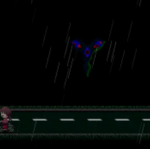
The theme of being watched seems prevalent in Madotsuki's dreams such as eyes following you in the Dense Woods, Barracks Settlement and more on the way to the Witch effect.
Hands are also scattered throughout the game ranging from a large theme of one world to appearing a few times within another. Some examples being the staircase lined with reaching hands on the way to Masada's spaceship, sprouting out of the ground in Eyeball World and in the White Desert. The room Uboa teleports you to has a nightmarish landscape where a monster with multiple hands grasps hills in the background. The implication may be that Madotsuki dislikes being touched and prefers a great amount of personal space.
A character who may tie into this is Organoid, who is the only NPC to swiftly teleport away upon approach.
Body themes
In Yume Nikki, it is common for NPCs or backgrounds to resemble body parts or inner organs. See also the themes of anxiety above for a description of hands in this game. Other examples are the numerous body parts in Eyeball World, the Bloody Touching Monster found in the White Desert, and the uteri-shaped creatures on the Infinite Road.
Some fans suggest furthermore that KyuuKyuu-kun, a large colorful worm-shaped creature who is seen rubbing the handrail of a stairway, is phallic imagery, as to access them Madotsuki has to go through a zipper in the wall. For whatever reason, Madotsuki seems concerned or frightened with body related things with how frequently they appear in her dreams, often times in a horrorific manner.
Another prominent body related theme found is various strabismic NPCs (strabismus meaning to be unable or having problems with fixating both eyes on one point at the same time, leading to the eyes not being aligned).
The most well known strabismic character of Yume Nikki is Seccom Masada-sensei, but other characters such as KyuuKyuu-kun are shown with strabismic eyes as well.
A few fans suggest Madotsuki herself would be shown to be strabismic if she would open her closed eyes.
Themes of Violence
Depending on the player's actions, Madotsuki can behave violently towards NPCs and sometimes inanimate objects. She is able to use the Knife effect on almost all of the NPCs with varying results.
While this makes the Knife a prominent effect in the game, it is nevertheless not necessary for gathering effects and thus achieving the ending, and most of the time, can be substituted by the Cat effect for exploring purposes. Regardless, the Knife is still perceived as a key object within the minds of many fans, leading to them interpreting that Madotsuki or other characters from the game can be prone to acts of violence.
Themes of traffic accidents
Different areas in Yume Nikki imply that Madotsuki often thinks about traffic accidents of some kind. Examples of this are Shitai-san, a dead person on the ground in the Dense Woods, surrounded by traffic cones, of whom the Stoplight can be gained. Seccom Masada-sensei is troubled by his spaceship crashing onto Mars, while Mars-san cries near something that appears to be a crashed locomotive, which can be seen as a representation of Madotsuki herself. In Dense Woods, Madotsuki can also board a Traincar, taking her to the Witch's Island where a creature similar to Mars-san can be found.
Monoko, a seemingly normal monochromatic girl found in one of the tunnels of the White Desert, drastically changes her appearance when the Stoplight is used: she now has five arms (one coming out of her head), some sort of wound on her stomach, and a very odd expression: her eyes both look in different directions, one of them spurting out some sort of liquid, and her mouth is wide open, making her look like she's crying and/or screaming. Using the Stoplight again restores her appearance. Other characters in this location that support this are the Severed Heads, two heads, one of a man, the other a woman, that appear floating by when Madotsuki enters a small building at the end of a path (meaning that she might not want to think about this), and Takofuusen, an odd creature that resembles an unborn child.
Japanese Folklore
Madotsuki's dreams are influenced by Japanese folklore, as various NPCs and effects are connected to demons, ghosts and monsters from Japanese mythology. This suggests that Madotsuki is interested in or feels personally involved within Japanese folklore.
NPCs that definitely relate to Japanese folklore are:
- Yuki-onna, who is modeled after the Yuki-Onna youkai and bestows Madotsuki the Yuki-Onna effect when interacted with.
- FC Demon, who might not look like a regular Oni, but the Demon effect they give more so.
- Nopperabou Ghost, who references the legendary faceless Noppera-bō creature and also gives out the Nopperabou effect.
- Ittan-momen, fan-named after the Yokai of the same name. It is a Tsukumogami that has been said to be a long cloth that has come to life and flies around, killing people by smothering them. It gives the Towel effect.
Some other Effects that are associated with Japanese folklore are:
- Cat, where Madotsuki becomes a humanoid Maneki-Neko holding a koban coin. As the Maneki-Neko is supposed to bring in customers with its good luck, it might explain why NPCs are drawn towards Madotsuki when she paws with her right paw.
- Triangle Kerchief given out by Fleebie. When applying the effect, Madotsuki appears with a Hitaikakushi, white triangle-shaped headbands which are often worn by Yūrei.
Native american imagery
Andean and mesoamerican historical native imagery from textiles and art such as of the Paracas culture, Nazca culture, the Aztec and the Mayan culture appear in many instances in Madotsuki's dreams and even her real-life room (the carpet). Out of all of these cultures though, the graphics in game mostly resemble that of ancient Peruvian art. It is possible that KIKIYAMA chose these themes to further give the game a dreamy feel, or because they simply liked how they looked.
Some instances of this include the backgrounds of the Nexus, Eyeball World, Shield-Folk World and KyuuKyuu-kun, as well as many characters like the Aztec Rave Monkey and NASU. It could indicate that Madotsuki feels connected with mesoamerican and andean culture and history. Some of the Paracas imagery is also themed after dreams.
Lucid Dreaming
As Madotsuki can wake herself up at any time in her dream and has control over her surroundings, she is by definition dreaming lucid dreams. Since she also keeps a dream diary, she remembers at least some things about them. Self-induced lucid dreaming is a successful therapy technique for dealing with sleep cycle affecting mental disorders or illnesses.
She may have been taught self-induced lucid dreaming to reduce frequency of nightmares and keeps a dream diary to keep track of her dreams as a self-care exercise.
Separation of dreams and reality
At all times during regular gameplay, and unlike certain fangames that followed Yume Nikki, the dream world and the real world is kept separate. Meaning, no "unreal" dream elements are carried over during the awake moments. During the Witch's Flight event, Madotsuki even falls out of her bed in the real world to indicate that she moved around in her sleep while having a strong dream.
However, after the ending, two Jellyfish appear, while the ending supposedly takes place in the real world. This has raised doubts in fans' minds of the ending being real and not another dream. In fact, some fans believe that Madotsuki is dreaming at every point in the game, citing her perpetually closed eyes and the unrealistic nature of living in an apartment without food or a bathroom as evidence. Others see this as a symbol that even in death, Madotsuki can't escape her nightmares.
In this aspect, the previously mentioned Toriningen can, by some interpretations, be seen as wanting to save Madotsuki before she kills herself, rather than being so-called 'enemies' of the game.
Theories regarding locations
Hospital themes
The location dubbed the Mall by fans has several rooms that closely resemble a doctor's or therapist's office, complete with a reception, fitting wall posters that slightly resemble graphs of the human body, two couches and a character sneezing. Entering a second room from the room with the reception leads you to O-Man, a character playing cheerful music. As the Flute effect can be found here, Madotsuki is able to perform music together with O-Man. This suggests the Flute is given to you by O-Man themself. Tying into the hospital theme, this may be a reference to music therapy.
In another room that is similarly structured to the above rooms, there is a character who has a large amount of red liquid coming out of its head and falls over when interacted with, spilling said liquid on the floor. The sound of the liquid pouring out of it could be interpreted as the sound of a beating heart, adding to the hospital theme. The main area contains colorful people that run away from the player when interacted with, as well as becoming distorted as if they were patients.
In the White Desert, one of the sounds that constantly plays in the background could be interpreted as a person constantly sneezing. This may also tie in with the traffic accidents theory, as people who survive said accidents are usually taken to a hospital to recover.
Parallels to the real world
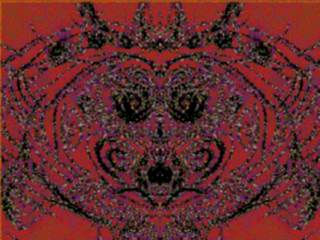
Although the player never sees much of the real world in the game, besides Madotsuki's Room and balcony, there are many interpretations about certain places/scenes in the game that could directly be connected to it. As mentioned in the themes of isolation above, one main character who could represent Madotsuki herself is Mars-san, as it is seen by itself, cut off from the rest of its world, hidden underground and only really found if the player knows where to go. The fact that it is seen crying next to what appears to be a broken down locomotive (or some sort of other machine) could also connect to the themes of car accidents in the game. What's curious is that the only way to access it in the game is by using the Midget could show how hard it is for Madotsuki to escape her own room.
One other main connection is the FACE event, due to the fact that the same door that is used to access this event, the Nexus, and to go out of the room in the real world. FACE itself, in its terrifying nature, could be used to represent Madotsuki's fear of the outside world, or simply a really abstract representation of what she thinks will happen to her out there. The fact that it also sort of looks like a uterus could connect to sexual assault theories as well.
The Pink Sea as a party
The dominating cheerful pink and pastel colors, the floating balloons and the conical structures that resemble Japanese-style party poppers in the Pink Sea may represent a party. And as Poniko is the only inhabitant of the Pink Sea, it might be thrown for or by her.

